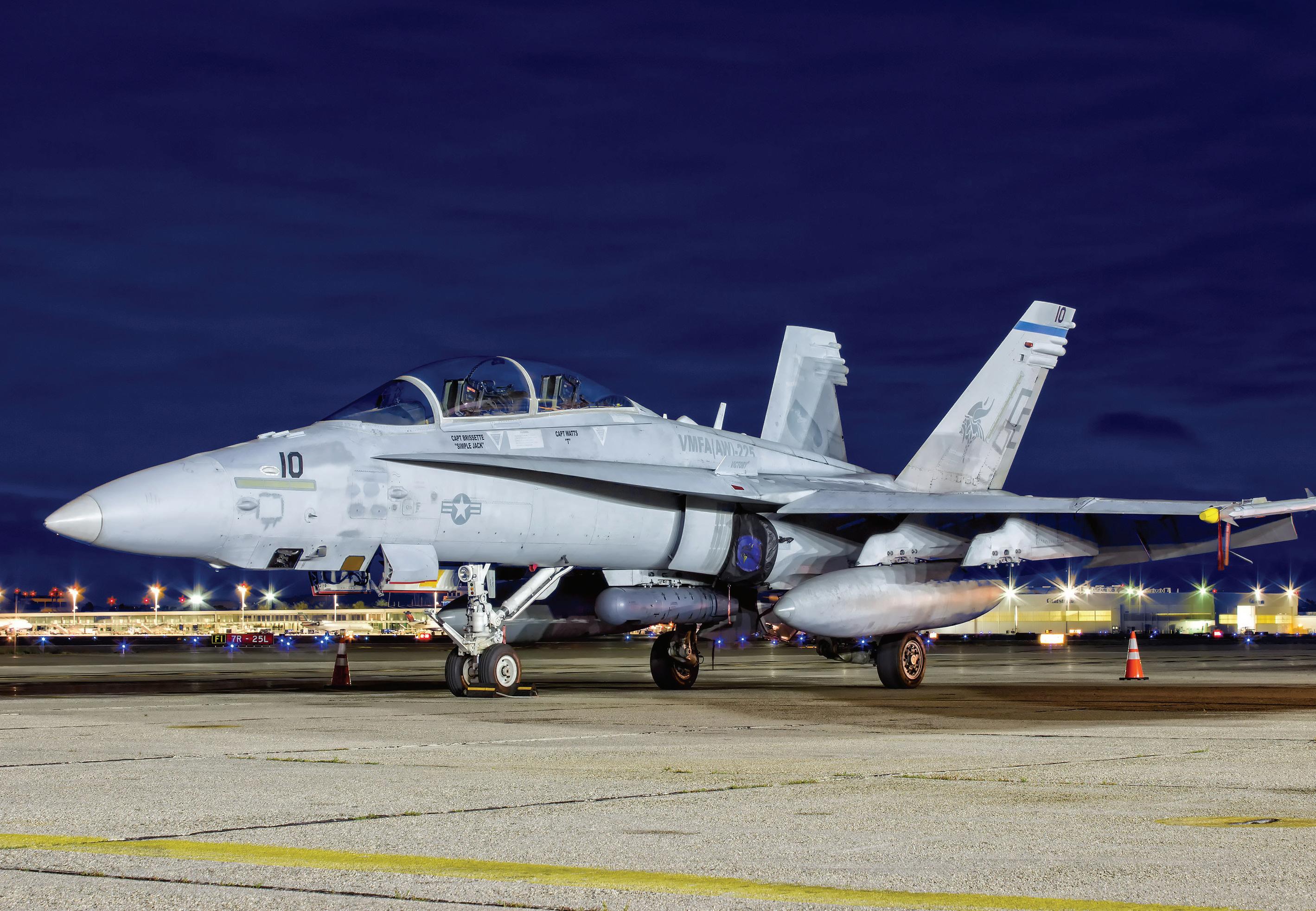

PUBLISHER
EDITOR IN CHIEF
DESIGN LEAD
RESEARCH LEAD





PUBLISHER
EDITOR IN CHIEF
DESIGN LEAD
RESEARCH LEAD


As we reflect on the first half of 2024, the aviation industry continues to demonstrate its resilience and capacity for innovation across multiple sectors.
Across the helicopter industry, technological advancements and strategic partnerships and are driving operational enhancements, with companies focusing on improved safety, efficiency, and customer service. Notable deliveries and leadership changes signal a renewed commitment to excellence and growth in this essential sector.
The business jet sector is experiencing a resurgence, marked by significant investments and strategic acquisitions. This growth underscores the sector's strong recovery and the increasing demand for premium air travel solutions. As the industry adapts to evolving needs, business aviation is poised for continued expansion.
Looking ahead, the future of flight is being redefined by breakthroughs in hybridelectric propulsion and
eVTOL technologies. These advancements promise to make air travel more sustainable and accessible, heralding a new era of efficiency and environmental responsibility.
Drones are becoming integral to the aviation landscape, playing a crucial role in logistics, infrastructure, and even autonomous operations. Their expanding capabilities highlight the importance of innovation in meeting modern challenges.
Sustainable aviation fuels (SAF) are at the forefront of efforts to reduce the industry's carbon footprint. With increased investments and new initiatives, the push for greener skies is gaining momentum, reflecting a collective commitment to a sustainable future for aviation.
Enjoy this month's edition and be sure to follow our Chronicle of aviation's daily journies as we share the stories from around the world, across all our platforms.
-Jason
AVFOIL NEWS CHRONICLES is published monthly by:
AVFOIL LIMITED
4 Mustang Lane, Wanaka Airport, Wanaka 9382, Otago, New Zealand
news@avfoil.com • avfoil.com
Publisher: Sacha Wetzel - sacha@avfoil.com
EDITOR IN CHIEF: Jason Jorgensen - jason@avfoil.com
© Copyright 2024
AVFOIL NEWS CHRONICLES retains all rights for reproduction of any material submitted, to include but not limited to articles, photographs, emails and bulletin board posts. All material remains the copyright of AVFOIL NEWS CHRONICLES. No part of this publication may be reproduced, in part or whole, without the written consent of the publisher. Published content does not necessary reflect the views of the publisher. Content within AVFOIL NEWS CHRONICLES is believed to be true and accurate and the publisher does not assume responsibility for any errors or omissions. Unsolicited editorial manuscripts and photos are welcomed and encouraged. We cannot be responsible for return unless submissions are accompanied by a stamped, self-addressed envelope. Advertising deadline is 12 noon, on the 1st of the month preceding the month of publication.


AUTHOR SOURCE
Helicopter Press Release
Fixed-Wing Fayaz Hussain Corporate Jet Investor
Future Flight Jason Pritchard
UAS / UAV Press Release
Sustainability Fayaz Hussain

Insights
Investor
Helicopter Press Release MD Helicopters
Fixed-Wing Yves le Marquand
Future Flight Press Release
UAS / UAV Press Release

Jet Investor
and ICAD
Aerospace
Sustainability Fayaz Hussain Corporate Jet Investor
Helicopter Press Release
Fixed-Wing Yves le Marquand
Future Flight Chris Stonor
Australia
Jet Investor
Insights




UAS / UAV Chris Stonor
Sustainability Fayaz Hussain
Helicopter Press Release

Insights
Investor
Fixed-Wing Yves le Marquand Corporate Jet Investor
Future Flight Press Release
Mobility
UAS / UAV Chris Stonor eVTOL Insights
Sustainability Fayaz Hussain

EDITOR'S
Helicopter Jeff Serpa
Fixed-Wing Aerial Fire Staff
Future Flight Jason Pritchard
UAS / UAV Press Release
Sustainability Fayaz Hussain
Investor
Fire Magazine
Fire Magazine
Insights
Source: LinkedIn
Author: Daniel Burtis - Pilot, Fire Services at Los Angeles County Fire Department

I truly have the greatest job on earth. I never say, “I have to go to work.” Rather, “I get to go to work.”
I have been blessed to have spent decades working among giants. Both in the military and the civilian sector. The commensurate professionals I work with now are absolutely some of the most heroic and selfless men I have had the honor of serving with. Their humbleness and pursuit of excellence is what makes them lose sight of how extraordinary they all are. Their daily OPTEMPO becomes ordinary.
Although many of them have never served in the military, I don’t think these men realize how much their devotion to duty parallels that of American Special Operations.
That being said, the honor of continuing to serve in this capacity is completely humbling. The sting of no longer taking the fight to the enemy is softened by mission diversity, challenging operational environments, and the cohesive bonds of my teammates.
(Photos courtesy of James @rb_firemedia)







Tag us in your aviation related photos for a chance to to be featured in our next issue!
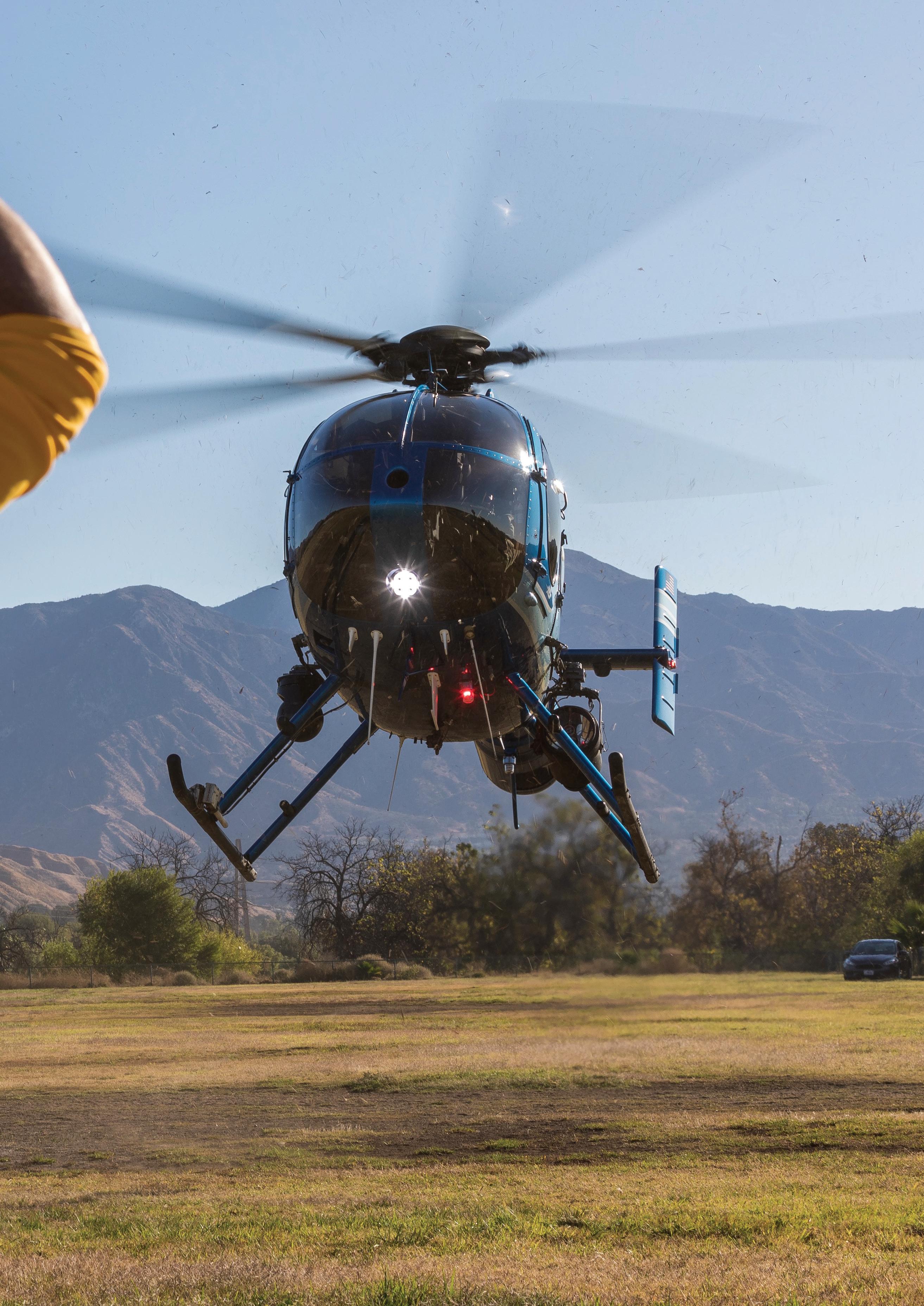
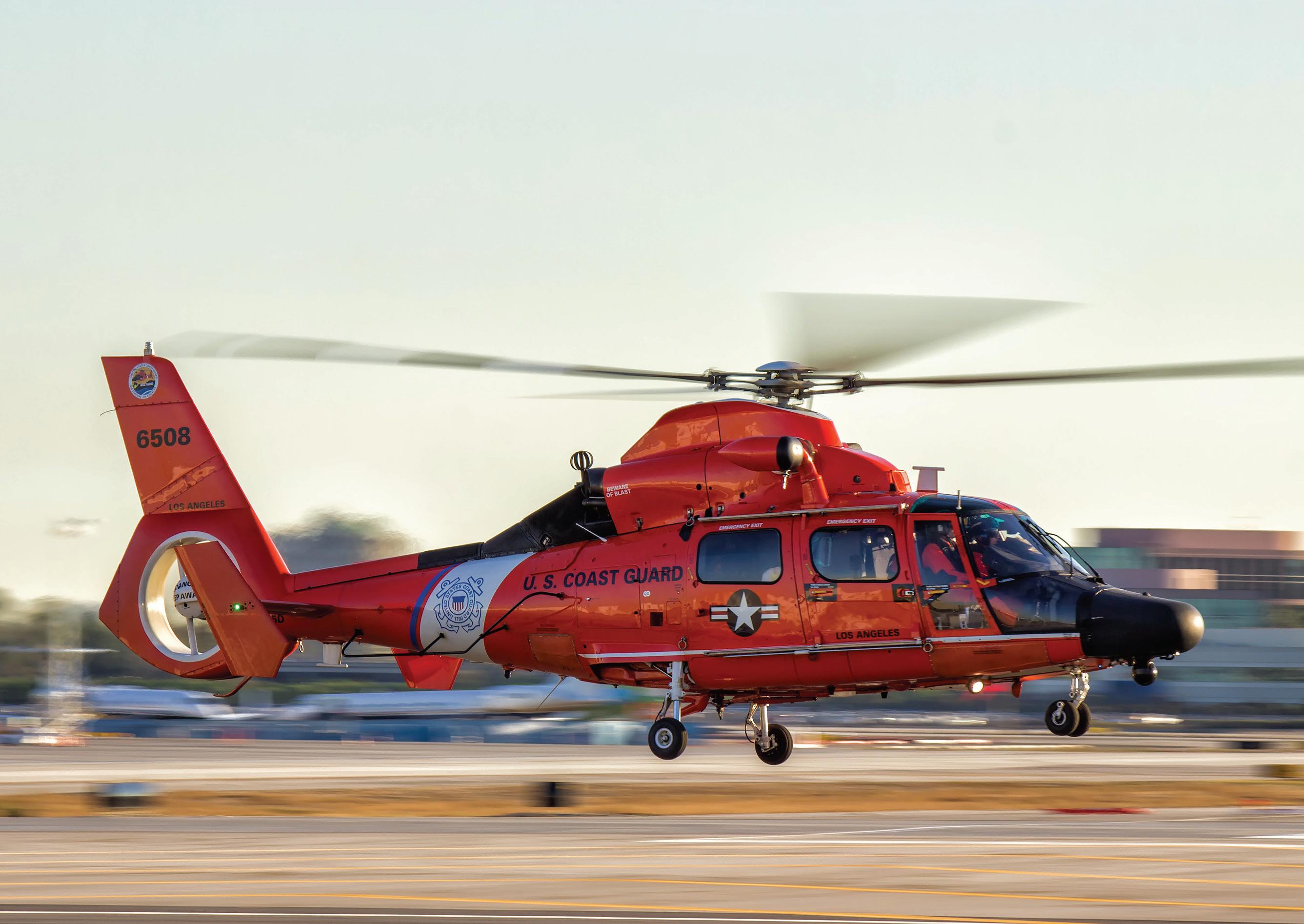













Summary of this month's top news
Source: Avfoil News
Author: A.I. Editorial
Airbus delivers a luxury helicopter, MD Helicopters announces new leadership, a LifeFlight fatherson team completes a first airlift, Tahiti Nui partners with ADSOFTWARE, and Orange County gets two Firehawks.
1st - Airbus delivers first ACH160 helicopter in Canada
Chartright Air Group welcomes Canada's first ACH160 helicopter, setting a milestone for Airbus with this state-of-the-art, luxurious model. Equipped with advanced Helionix avionics and quieter Blue Edge blades, the ACH160 enhances safety, comfort, and performance, raising the bar for private aviation in North America.
2nd - MD Helicopters announces leadership change and commitments
Brad Pedersen takes the helm as the new CEO of MD Helicopters, bringing extensive industry experience. The company reaffirms its dedication to customer support and innovation, positioning itself for growth with strategic leadership and a renewed focus on customer-centric services.
3rd - LifeFlight's father-son duo completes historic airlift
LifeFlight's father and son pilot team achieves a company milestone by executing a complex airlift mission, showcasing exceptional teamwork and expertise. This accomplishment underlines LifeFlight's commitment to highstakes, life-saving operations, highlighting the duo's aviation skills.
4th - Tahiti Nui Helicopters partners with ADSOFTWARE
Tahiti Nui Helicopters collaborates with ADSOFTWARE to streamline maintenance operations with advanced software, enhancing efficiency and reliability. This partnership emphasizes the vital role of technology in modern aviation maintenance, aiming for improved operational performance .
5th - Orange County receives two new Firehawk helicopters
Orange County enhances its firefighting capabilities with the addition of two Sikorsky S-70i Firehawk helicopters. These aircraft are crucial for rapid response and firefighting efficiency, representing a significant investment in public safety and emergency readiness .
These articles were the most popular helicopter news stories with our readers last month. To stay updated with the latest daily news from the helicopter industry, be sure to visit: avfoil.com/news

Source: Airbus Press Release

Chartright Air Group, a provider of private aviation services in Canada, has taken delivery of Canada’s first corporate ACH160. The helicopter will enter into service immediately, as the first to be delivered in North America.
“We are excited to be the first private aviation company in Canada to operate the ACH160 for our owner and charter clients,” said Graham Nierop, director of sales at Chartright.
“With its advanced technology, performance, and high passenger capacity, the ACH160 is set to redefine helicopter charters in the GTA [Greater Toronto Area] and across Canada.”
The helicopter will be available for charter later this summer.
Known for its cutting-edge technology, exceptional performance, and versatile design equipped to handle multiple missions, the ACH160 is poised to transform the private aviation sector across Canada.
The ACH160 is the premium version of the H160 which was certified by Transport Canada in December 2023.
“This delivery is a landmark moment in Canada for Airbus Helicopters,” said Dwayne Charette, president of Airbus Helicopters in Canada.
“The ACH160’s innovative features and superior

performance set a new benchmark for the industry in terms of safety, comfort, and efficiency, and we are excited to see the positive impact. We look forward to seeing many more ACH160 helicopters flying in the skies above Canada, as well as H160s serving various mission segments in the country.”
The ACH160 is equipped with Airbus Helicopters’ Helionix suite, providing safety and reduced pilot workload. The helicopter features sound-reducing Blue Edge rotor blades for quieter operations. It is powered by two of the latest Arrano engines from Safran Helicopter Engines that offer a 18 percent reduction in fuel burn.
Passengers will also appreciate flying more comfortably with a spacious cabin, a smooth ride, and larger windows, creating the brightest cabin in its class and external visibility that benefits both passengers and pilots.
The full ACH helicopter range consists of the ACH125, ACH130, ACH135, ACH145, ACH160 and ACH175 variants of Airbus Helicopters’ comprehensive and market-leading family of light and medium models. A range of premium-design aircraft completions, including bespoke designs, is available for all models.
Chartright Air Group offers a comprehensive suite of services including Private jet charter, aircraft management, FBO operations, aircraft leasing, and maintenance.

Source: MD Helicopters Press Release

MD Helicopters LLC (MDH) has promoted Ryan Weeks to president of MDH effective immediately. Weeks will assume responsibility for day-to-day operations of MDH. Brad Pedersen will continue to serve as chief executive officer working strategic initiatives with the Board of Directors.
“MD Helicopters continues to be deeply committed to strengthening our support for our customers around the world, said Board Chairman, Ed Dolanski. “In a short two years, Ryan and Brad have drastically improved our Aftermarket Operations and we aim to continue to ensure the fielded fleet is the strongest it’s ever been.”
MDH has made significant improvements in the past two years in supporting its fielded fleet with increases in spares volume, repair and overhaul volume, and timely AOG shipments. Spare parts inventory-health continues to improve and MDH remains committed to

achieving a 95% fulfillment rate from order placement to shipment within 48 hours on the top 1,000 part numbers.
“I am honored for the opportunity to build upon the improvements we made under Brad’s leadership over the past 21 months. We still have a lot of room for improvement, but our network and operators are saying MDH is making progress.” said Weeks who previously held the position of vice president, aftermarket service and support.
In addition to substantial progress in spare parts and repair & overhaul availability, MDH’s global network of service centers and parts retailers has seen major changes and is stronger than ever. The network is currently 40 members in size and strategically selected to support the MDH fleet around the globe. Fielded fleet upgrades including the Super N, Super D and Super E are in the works and expected to be available in 2025.
LifeFlight father and son pilot duo complete airlift in company first
Source: LifeFlight Press Release
Author: Aerial Fire Staff

It was one for the LifeFlight record books when a father and son pilot duo airlifted a five-year-old girl from Dalby to the Queensland Children’s Hospital in Brisbane.
RACQ LifeFlight Rescue helicopter pilots Trevor and Michael Wilson have enjoyed successful careers in the aviation industry, but it was the first time they had flown together on an aeromedical mission.
When a normal day in the office is in a helicopter big enough to house medical crew, aircrew, a patient and medical equipment, their jobs are anything but ordinary.
As a child, Michael spent his time playing on similar helicopters that he now flies as a pilot
Dad Trevor worked for several aviation services through Michael’s upbringing, and a career in flying was already in his blood.
“I’ve always been around helicopters, and particularly rescue helicopters, from a young





age due to being Trevor’s kid,” Michael said.
“As any young kid will attest, something that’s loud and fast will always grab your attention.
“This is the first time we have worked together on a mission, but we have worked adjacent a couple of times through training.
“The best thing is being able to see him in his ‘work environment’, because you get an idea about what has made him tick all these years.”
Trevor has been flying choppers for decades and has worked for several prominent aeromedical services in Australia.
“I’ve been flying for 30 years now. I’m a pilot and a flight examiner at the LifeFlight Training Academy,” he said.
“For the last 23 years, I was the head of flying operations for Queensland Government Air (QGAir), and my role at the time was to bring the AW139 helicopters into Australia in 2007.
“Before that, I was chief pilot for the Westpac Rescue Helicopter Service in Lismore for seven years.
“It’s something I always wanted to do as a kid. I always wanted to be a builder, a police officer, and a helicopter pilot, and I’ve done all three.”
Trevor said when you work as a pilot for a rescue service, there’s a sacrifice to be made – the patient always comes first and public holidays are often spent in the chopper.
“Families of the staff would come to the base on Christmas Day and we’d celebrate in the hangar,” he said.
“I remember telling Michael when he was a kid not to touch the helicopters, and now he gets paid to touch them.” Michael has been flying for 17 years and has spent the last two working at LifeFlight.
“LifeFlight is a pretty iconic organization to fly for, especially as a Queenslander. They’ve been doing brilliant work for decades. I remember seeing the helicopters on the Gold Coast when they first started,” he said.
The dynamic duo works out of Brisbane Airport, where LifeFlight connects more Queenslanders to major hospitals and 24/7 life-saving medical care.
The Brisbane-based RACQ LifeFlight Rescue crews were tasked to 172 missions from January to April this year, while its fixed-wing jet crews completed 196 medical transfers.

Brisbane Airport CEO Gert-Jan de Graaff, said the airport and LifeFlight had forged a strong partnership.
“The LifeFlight crews based at Brisbane Airport play an extremely important 24/7 role for the Queensland community,” he said.
“LifeFlight is a pioneer when it comes to rescuing and retrieving critically injured patients, whether it is in the South East or regional Queensland.
“Its jets also play an essential role in bringing Australians who have been injured overseas back home.
“We’re proud to partner with LifeFlight and to back the teams of men and women on the frontline of providing urgent medical care to those who need it fast.”
For Trevor and Michael, that means saving more lives and notching up more flying hours together.

Source: ADSOFTWARE Press Release

Tahiti Nui Helicopters has chosen ADSOFTWARE as a trusted partner to support its aerial operations in French Polynesia.
By providing specialized software solutions to CAMO and Logistics teams, ADSOFTWARE enables Tahiti Nui Helicopter‘s fleet to benefit from a dedicated and customized ERP system, perfectly suited to its requirements.
A small part of France offering extraordinary experiences, French Polynesia is an ideal location to leverage the unique advantages of helicopter flights. Tahiti Nui Helicopters has established itself as the sole helicopter air carrier due to its operational efficiency.
As a long-standing partner in this region and with the shareholders of Tahiti Nui Helicopters, ADSOFTWARE holds all the keys to offer a tailor-made solution adapted to the needs of the Tahitian teams.
Whether in tourism, medical rescue, or aerial work, the Air Tahiti Nui subsidiary can now rely on proven software solutions to fully exploit the potential of its fleet, ensuring smooth and secure operations.
Each collaboration with ADSOFTWARE is based on shared values, with a particular emphasis on fleet safety supported by its software. ADSOFTWARE is committed to supporting the Tahitian company’s priority: ensuring safety and comfort for its passengers.
“The goal for Tahiti Nui Helicopters in selecting ADSOFTWARE is to swiftly comply with regulatory requirements using industry-specific tools, much

like wearing a custom-fitted suit,” said P. Marais, technical and airworthiness manager at Tahiti Nui Helicopters.
The assurance of operational competence within the ADSOFTWARE teams and its 26 years of expertise in aviation-dedicated software make it a trusted ERP provider to support Tahiti Nui Helicopters’ maintenance and airworthiness teams.
Through the adoption of three ADSOFTWARE solutions, Tahiti Nui Helicopters provides an essential combination to its employees. The deployed modules are a pillar for the daily CAMO, MRO, and logistics missions, ensuring the overall health of the Polynesian helicopter fleet.
• Airworthiness: A robust module for airworthiness management ensures compliance and safety, facilitating CAMO missions and the organization of maintenance operations.
• Logistics: Optimizing logistics operations to improve supply chain efficiency, reduce downtime, and maximize performance, a powerful supply chain management software supports Tahiti Nui Helicopters’ teams.
• Statistics: With over 100 models, this third module enables the creation of reliable, customized, and quickly editable statistical reports according to the company’s needs. The alliance between ADSOFTWARE and Tahiti Nui Helicopters demonstrates the wide range of expertise in French aviation operations. Together, they are committed to supporting the evolution and sustainability of helicopter activities within the archipelago.
Source: Aerial Fire Magazine
Author: Jeff Serpa

June 22 saw the arrival at Fullerton Airport of two of the county’s newest aviation assets: two new Sikorsky S-70 FIREHAWKs, which were delivered by United Rotorcraft, the Denver, Colorado-based completion center that outfitted the new helicopters.
Orange County (OCFA) initially announced the order of two FIREHAWKs in November 2022; however, several delays during the completion process delayed delivery until this week.
OCFA previously operated several UH-1H aircraft, which were superseded by Bell 412s before the arrival of the S-70s. The Sikorsky aircraft’s increased weight and passengercarrying capability will give the agency both a type two and type three capability for aerial firefighting going forward, in addition to increasing the agency’s search and rescue capabilities.


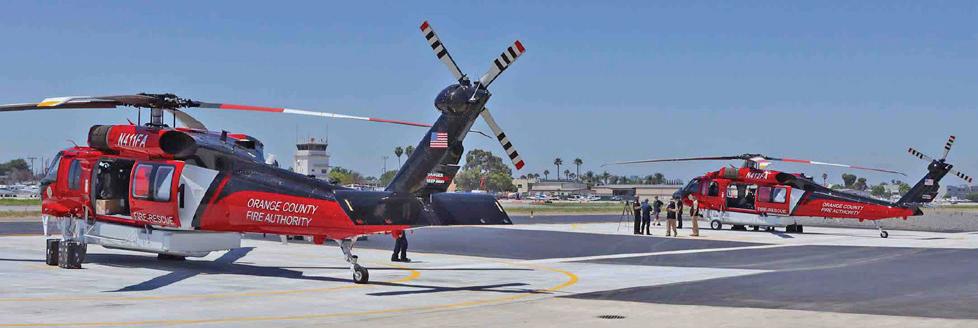

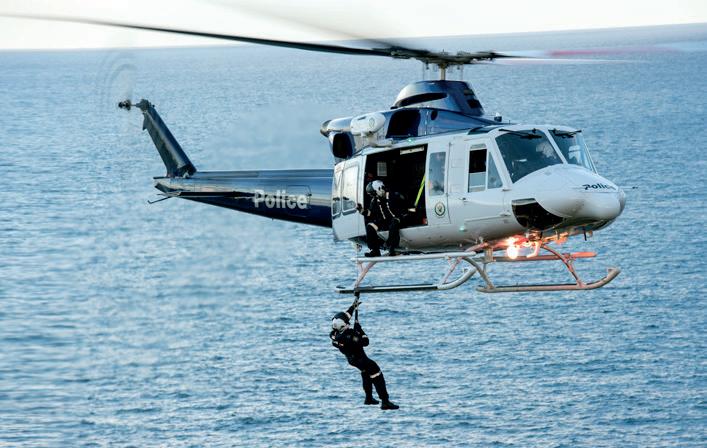



We provide public safety and law enforcement accessories to agencies around the world. With a focus on continually expanding the number and types of products available, our parts and accessories include:
• Glass Cockpit Upgrades
• Rescue Hoists and Provisions
• Polycarbonate Windshields
• Fast Rope Insertion/Extraction System
• Lighting Kits
• Quick Mount Kits
• Health and Usage Monitoring (HUMS)
• High Visibility Windows
• Flight Data Monitoring
• Expanded Instrument Panels
• Autopilot
• Landing Gear and Steps
FOR MORE INFORMATION AND PRICING: Visit aero-access.com email sales@aero-access.com or call 800-251-7094

Airbus delivered their first ACH160 helicopter to Canada. This new helicopter has advanced features that make it very safe and comfortable. It's like getting a brand-new, super cool car that no one else has. The ACH160 can be used for fancy trips or important flights, and important people in Canada are very excited to start using it.


MD Helicopters has a new boss to help guide the company. They promised to support their helicopters and customers better. It's like having a new team captain who makes sure everyone is doing their best and taking care of their equipment, helping the company improve and keep their helicopters flying smoothly.
LifeFlight had a special mission where a father and son, both pilots, worked together to help someone. This was their first time teaming up. It’s like a superhero dad and his kid saving the day together. Everyone at LifeFlight is proud of their teamwork and successful mission.


Tahiti Nui Helicopters is working with ADSOFTWARE to manage and maintain their helicopters better. Imagine having a friend help you organize and fix your toys. That's what ADSOFTWARE is doing for Tahiti Nui. This partnership ensures their helicopters are always in good shape and ready to fly.
Orange County California got two new helicopters called Firehawks. These helicopters help firefighters by carrying lots of water to put out big fires. Think of them as giant flying water guns. The Firehawks help firefighters protect people and homes more effectively, making their job easier and safer.




2. What helicopters often do to help people in danger.
5. The person who flies the helicopter.
6. A special area where helicopters land and take off.
8. When a helicopter stays in one place in the air.
9. One of the long, flat parts of the rotor.
11. What the pilot uses to steer the helicopter.
13. The place where the pilot sits.
14. The act of flying in the air.
1. The back part of a helicopter.
2. The spinning part on top of a helicopter.
3. The machine that powers the helicopter.
4. A helicopter used to take injured people to the hospital.
7. What a helicopter does when it leaves the ground.
10. What a helicopter does when it touches the ground.

12. The part of the helicopter that touches the ground when it lands.
Use the clues to fill in the words above.
Words can go across or down.
Letters are shared when the words intersect.



Source: Avfoil News
Author: A.I. Editorial
Bombardier redeems notes to reduce debt, VOO wins business award, FlyHouse acquires JetASAP, Icarus Jet partners with RVR Aviation, and Coulson Aviation’s water bomber arrives early in Victoria.
1st - Bombardier redeems $788M in senior notes
Bombardier redeems $788 million in senior notes as part of its ongoing debt reduction strategy. This financial move, coupled with a new bond issue, has led to a credit upgrade from S&P Global. The successful transaction demonstrates Bombardier’s commitment to improving its financial health and stabilizing its business outlook .
2nd - VOO wins at the MEA Business Achievement Awards:
VOO wins at the MEA Business Achievement Awards for its innovative approach in the aviation sector. The company's cutting-edge technology and service excellence have been recognized, highlighting its impact on the industry and commitment to customer satisfaction.
3rd - FlyHouse acquires charter booking platform JetASAP:
FlyHouse expands its aviation portfolio by acquiring JetASAP, a leading charter booking platform. This acquisition aims to enhance FlyHouse's service offerings and streamline booking processes, providing customers with more efficient and accessible private jet travel solutions.
4th - Icarus Jet announces RVR Aviation partnership:
Icarus Jet partners with RVR Aviation to enhance its global aviation services. This strategic alliance aims to expand Icarus Jet’s operational capabilities and service range, offering improved solutions for private jet charters and aviation consultancy.
5th - Coulson Aviation's water bomber arrives early in Victoria:
Coulson Aviation's donated Martin Mars water bomber, Hawaii Mars, arrives early in Victoria. The aircraft's early arrival underscores its readiness to assist in firefighting efforts, demonstrating Coulson Aviation’s commitment to community support and environmental safety
These were the most popular stories with our readers last month. Stay informed daily with the newest developments and trends shaping the future of aviation by visiting: avfoil.com/news.

Source: Corporate Jet Investor
Author: Fayaz Hussain

Canadian aerospace manufacturer Bombardier announced that it has successfully completed the redemption of a portion of its outstanding senior notes.
The company repurchased a total of $788m, consisting of $338m senior notes of 7.125% due in 2026 and $450m of 7.875% due in 2027.
Bombardier had previously issued notices of partial redemption for these notes on May 21, 2024. The redemption process, including the payment and surrender of the notes, is being handled through the Depository Trust Company.
Earlier this month, Bombardier announced the successful closing of its previously announced offering of senior notes

raising a total of $750m with these notes maturing in 2032 carrying an interest rate of 7.00% per year.
The company said that it plans to use the proceeds from this offering, along with existing cash reserves, to pay off some of its existing debt including the $338m and $450m in today.
Bombardier has been on a deleveraging drive to improve its balance sheet.
Acknowledging the actions taken by the company, credit ratings agency S&P Global upgraded the Canadian business jet maker Bombardier’s credit rating to ‘B+’ from ‘B’ citing continued progress on reducing debt and a stable business outlook.
Source: Corporate Jet Investor Author: Yves le Marquand

VOO has won a prize in the GroundBreaking Products and Services in Aviation category at the MEA Business Achievement Awards held this week in Dubai.
This recognition is the second award for VOO after winning Technology Innovation of the Year Award earlier this year. The firm unveiled its instant booking technology at EBACE last month in partnership with its launching customer charter firm GlobeAir.
Robert Plhak, CEO at VOO flights said: “Winning a second prestigious award within a short timeframe is truly remarkable. It’s a great validation of the transformative power of our technology and the dedication of our entire team. This recognition further motivates us to push the boundaries of

innovation on the way to make our platform the industry standard.”
The platform streamlines the traditionally complex booking process for both brokers and operators, eliminating back-and-forth negotiations and manual paperwork. Through VOO’s platform, brokers gain instant access to GlobeAir’s aircraft availability and pricing, enabling them to generate swift and accurate offers for their clients. The technology won first place from a shortlist of 18.
“It’s time for business aviation to embrace technology that optimises processes and improves the experience for all business aviation professionals. VOO is here to lead the charge, and these awards encourage us to inspire the adoption of innovative solutions across the industry,” added Plhak.
Source: Corporate Jet Investor
Author: Yves le Marquand

FlyHouse has acquired private jet charter booking platform JetASAP.
This strategic acquisition for FlyHouse comes as it prepares to launch its app for customers. By utilising advanced technology, FlyHouse plans to enhance “the overall customer journey” and “simplify” the booking process. The firm says it has a “strong commitment” to offering transparent pricing, real-time availability and streamlined booking procedures.
Jack E. Lambert Jr., CEO of FlyHouse, said: “Acquiring JetASAP is a monumental step forward for FlyHouse. This integration not only enhances our service offerings but also aligns perfectly with our mission to transform the aviation industry. We are dedicated to leveraging JetASAP’s technology and expertise





to deliver an exceptional experience for our customers and stakeholders.
“This acquisition is a game-changer, and we are eager to integrate their platform with our upcoming app, setting new standards in private jet travel. Our goal is to make private jet travel more accessible, transparent, and efficient for our customers.”
Lisa Kiefer Sayer, founder and CEO of JetASAP, has now joined FlyHouse’s leadership team.
“I can’t wait to jump in and get started,” said Kiefer Sayer. “In the coming weeks and months, I’ll be working closely with the team to scale both the FlyHouse app and JetASAP, building on our solid foundations. Together, we will be stronger and move even faster to reimagine the future of aviation.”
Source: Corporate Jet Investor
Author: Yves le Marquand

Icarus Jet has formed a strategic charter brokerage partnership with ARGUS Platinumrated RVR Aviation, gaining access to four Embraer ERJ135 aircraft.
The agreement enhances the firm’s regional group charter services. Icarus specialises in organising charters for large groups of 30-300 passengers for corporate events, sports teams, musicians on tour and C-suites.
“Our new partnership with RVR Aviation and the addition of the ERJ135 to the brokerage fleet marks a significant milestone for Icarus Jet, allowing us to better serve our clients with more options and enhanced flexibility for their travel needs,” said Kevin Singh, president of Icarus Jet.
Opting for large jet charters offers significant cost savings, according to Singh. For example, a one-way flight from Dallas to Cancun costs around $160,000 for two heavy jets, whereas a group charter on the ERJ135 is approximately $65,000. Similarly, the cost per passenger from


Dallas to Cabo San Lucas drops from $6,400 to $2,600.
“We are committed to offering the highest safety, comfort, and efficiency standards in our group charter services. With the ERJ135, we can provide a cost-effective solution for large groups without compromising on the luxury and convenience our clients expect,” adds Singh.

Icarus Jet also offers aircraft like the CRJ 1000 and A319 for larger groups, accommodating up to 100 passengers or more. The firm serves over 200 locations across North America, including Mexico. It also offers large aircraft options in Egypt and various other international regions.
“We are thrilled to expand our brokerage services by offering the ERJ135 as an option for regional group charters; this development opens new possibilities for Icarus Jet and our clients, enabling us to meet the growing demand for regional group charters with unmatched service quality.”
Coulson Aviation’s donated Martin Mars Waterbomber Hawaii Mars to arrive in Victoria ahead of schedule -
Source: Aerial Fire Magazine
Author: Aerial Fire Staff

Coulson Aviation’s donated Hawaii Mars (Martin JRM-3 Mars) waterbomber is now tentatively scheduled to arrive in Victoria, B.C., sometime in August, several months ahead of schedule. Coulson announced the donation of its 1940s World War II-era converted waterbomber to the museum this past April for an expected delivery in the Fall of 2024.
“Our Mars maintenance and flight crews have been working diligently to prepare the aircraft for its final flight,” said Coulson Aviation President and COO, Britt Coulson. “Despite what you might have seen in the media, the maintenance of this aircraft is still in flux. Various factors continue to impact the schedule, making it difficult to establish a precise completion and delivery date. However, we are pleased to announce that we have surpassed its original expected fall arrival date.”
When all maintenance, inspections, and government approvals are complete, the Hawaii Mars will take off from Sproat Lake in Port Alberni and land at Patricia Bay in the Saanich Inlet directly beside the Victoria Airport. Please note that a water drop will not be performed during this flight. After arrival, it will be de-watered then carefully transported across the Victoria Airport through a carefully orchestrated set of procedures to rest beside the museum.
“We are grateful to Coulson Aviation and thrilled to offer a home for the largest aircraft on display on Vancouver Island,” said Richard Mosdell, project lead on the museum’s Save the Mars Team. “Once the aircraft is settled in the museum’s BC Wildfire
Aviation Exhibit, the BC Aviation Museum plans to offer a unique open format that allows visitors to experience the Hawaii Mars up close and personal, including the opportunity to sit in the 4-story cockpit. “

This final landing in Victoria marks the end of an 80year storied history for the Hawaii Mars. One of only two remaining Martin JRM-3 Mars waterbombers, the Hawaii Mars flew cargo between Hawaii and the Pacific Islands during World War II. It later supported the Korean War with medical transport between Hawaii and California before transitioning to cargo operations between the two states. The four-aircraft surviving fleet was sold to a consortium of BC timber companies in 1958 and converted into the world’s largest waterbombers to fight forest fires, carrying 27,000 liters (7,200 US gallons) per drop.
Coulson purchased the two Mars aircraft in 2007, marking the beginning of the BC company’s fixed-wing air tanker operations for aerial wildfire support. After using the aircraft for several years of successful wildfire suppression support, Coulson retired its Mars waterbombers in 2015. Its second Mars, the Philippine Mars, will be heading to the Pima Air and Space Museum in Tucson, Arizona.
Coulson Aviation and the BC Aviation Museum will update the local and aviation community on exact arrival timing and route closer to the date so enthusiasts can witness the Hawaii Mars’ final landing and carefully planned transport to the museum.

Bombardier, a company that makes many types of airplanes, paid back $788 million it owed. It's like when you borrow money and then give it back to the person you borrowed it from. This helps Bombardier have less debt and be in better financial shape.


VOO, a company that helps people buy and sell airplanes, won an important award for being great at business. It's like getting a gold star at school for doing a really good job. This award shows that VOO is doing things right and is recognized for its achievements.
FlyHouse, a company that arranges private flights, bought another company called JetASAP. This is like when you buy a new tool to help you do your job better. Now, FlyHouse can use JetASAP's technology to make booking flights easier for their customers.


Icarus Jet, a private jet company, is teaming up with RVR Aviation. This partnership is like two friends working together on a school project. By joining forces, they can offer better services to more places and make their customers happier.
Coulson Aviation donated a historic firefighting plane called Hawaii Mars. This plane is very special because it's one of the biggest water-carrying planes ever made. It’s arriving early at a museum in Victoria, so it will be ready soon for people to visit and learn about. Kids and adults can enjoy seeing this amazing plane for many years to come.







Source: Avfoil News
Author: A.I. Editorial
VerdeGo Aero advances hybrid power with NASA, UrbanV and ICAD bring AAM to Saudi Arabia, new aerospace tech partnership formed, Crisalion Mobility and iJET pre-sell eVTOLs, and Lilium tests its electric jet propulsion.
1st - VerdeGo Aero awarded NASA contract
VerdeGo Aero wins a NASA SBIR Ignite contract to develop its hybrid-electric powerplant for electric aircraft. The project explores sustainable aviation with the VH-3-185 powerplant, enhancing electric aircraft range and efficiency with sustainable fuel integration.
2nd - UrbanV and ICAD partner for AAM in Saudi Arabia
UrbanV teams up with ICAD to launch Advanced Air Mobility (AAM) in Saudi Arabia. The collaboration aims to develop vertiports and integrate urban air mobility solutions, enhancing regional connectivity and technological advancement.
3rd - Aerospace collaboration for technology integration
A new aerospace partnership aims to integrate emerging and existing technologies safely. This collaboration focuses on creating a framework for harmonizing technological advancements across the sector, ensuring seamless and secure operations
4th - Crisalion Mobility and iJET pre-sale agreement
Crisalion Mobility secures a pre-sale agreement with iJET for ten Integrity eVTOLs. This deal marks a significant step in expanding urban air mobility, with Crisalion's innovative eVTOLs set to transform city transportation
5th - Lilium completes electric jet tests
Lilium successfully tests its electric jet propulsion system, a groundbreaking achievement for its eVTOL aircraft. This test signifies a major milestone in Lilium’s development, showcasing the potential for efficient, eco-friendly air travel.
To stay updated with the latest news in the future flight industry, visit: avfoil.com/news for daily updates and in-depth coverage of groundbreaking advancements.

Source: eVTOL Insights
Author: Jason Pritchard

VerdeGo Aero has been awarded a Phase I Small Business Innovation Research (SBIR) contract under NASA’s SBIR Ignite program, where it will demonstrate how its VH-3–185 hybrid-electric powerplant is applicable in electric aircraft.
SBIR Ignite is a pilot initiative for high-growth, product-oriented entrepreneurs, startups, and small businesses to use NASA as a stepping stone in their path towards commercial success.
It funds small US businesses in their early-stage, high-risk technology development to help make them and their technologies more attractive to private sector investors, customers, and partners.
During the six-month effort, VerdeGo will also complete conceptual design studies on four types of electric aircraft.
Eric Bartsch, CEO of VerdeGo Aero, said: “VerdeGo Aero is honored to have been selected by NASA for the SBIR Ignite program. The VH-3 is a Hyperefficient technology that enables electric aircraft to have the range and endurance needed for safe and practical operations. When paired with sustainable aviation fuel (SAF), the VH-3 provides

a fully sustainable powerplant solution.“
Built around a custom version of the SMA SR305, an EASA-certified and FAA-validated aviation compression engine, the VH-3–185 generates 185 kW (249 hp) of electricity to power the electric motors of an electric aircraft.
The VH-3 uses commonly available fuel and boasts an industry-leading fuel burn of about 10 gallons per hour at full throttle.
Dave Spitzer, VerdeGo’s Vice President of Product Development, added: “The VH-3 can be a gamechanger for eVTOL aircraft. The batteries in eVTOL aircraft can provide a lot of power, but not for long periods adding a ton of weight to the aircraft.
“The VH-3, when paired with three hours of fuel, weighs about 80 per cent less than a battery that could provide the same flight time.”
Riccardo Roiati, VerdeGo’s Principal Investigator for the study, added, “We’re excited to show NASA and the world what the VH-3 can do – its flexibility, its efficiency, and how it can be applied to different electrified aircraft.”


Source: UrbanV and ICAD Press Release
UrbanV and ICAD Holding LTD are partnering to combine their distinctive capabilities in developing vertiport operations and infrastructure in Saudi Arabia and beyond.
This collaboration aims to establish a blueprint for vertiport operations, including take-off and landing procedures, technology system integration, and define a plan to operate vertiports and vertiport networks in the Middle East.
The agreement outlines a cooperation between UrbanV and ICAD to explore joint opportunities in developing projects in the field of Advanced Air Mobility (AAM) and Urban Air Mobility (UAM) across the region.
UrbanV will leverage its expertise in vertiport planning, design, network analysis, business planning, route evaluation, and interaction with regulatory authorities. Additionally, UrbanV’s extensive global network in the AAM sector will support various stakeholders, including private and public entities, in the region.
ICAD will contribute its broad expertise across various sectors, including construction, technology integration, and operational management, to support UrbanV in building and managing vertiports. This includes contracts for aeronautical and non-aeronautical aspects of vertiport operation and maintenance.
The collaboration aims to accelerate the development of AAM and UAM services in the Middle East, establishing a robust infrastructure network that will facilitate the seamless integration of aerial mobility solutions into the region’s transportation ecosystem.
Carlo Tursi, CEO at UrbanV,said: “At UrbanV, we aim to improve people’s lives by enabling a fast, efficient, safe, and clean alternative to existing transport solutions for people and goods over short distances, by air. We have the ambition to become a major global operator of vertiport networks and we will be global pioneers in establishing some of the first AAM


routes worldwide. We are excited to partner with ICAD, a global leader in its field, and we look forward to exploring together with them the great potential of introducing advanced air mobility in the Middle East and beyond.”
Rabih El Sayegh, Board Member at ICAD, said: “We are thrilled to embark on this groundbreaking partnership with UrbanV, which marks a significant milestone in the evolution of Advanced Air Mobility in Saudi Arabia. ICAD’s commitment to excellence in infrastructure, construction, technology integration, operation and maintenance will be pivotal in developing state-of-the-art vertiports. This collaboration underscores our dedication to pioneering innovative solutions that will transform the regional transportation landscape.”
Ziad El Sayegh, CEO at ICAD, said: “ICAD is proud to join forces with UrbanV to spearhead the development of vertiport infrastructure in the Middle East. Our extensive experience in construction and technology integration positions us uniquely to support UrbanV in realizing their vision for a seamless infrastructure for aerial mobility network. Together, we will create a robust framework for vertiport network operations that not only enhances connectivity and passenger experience but also sets new standards for efficiency and sustainability in urban air mobility.”
Source: eVTOL Insights
Author: Chris Stonor




Airways International and Tāwhaki Joint Venture announced this week, a collaboration to help push forward the New Zealand aerospace sector, reports a press release. Both companies are focused on supporting growth in a way that enables a safe integration of new and existing aerospace technologies.
The agreement “identifies key target areas to fast-track testing of uncrewed aircraft that can benefit operators, policy makers and regulators in Aotearoa New Zealand and around the world,” explains the release.
Tāwhaki will soon be deploying the latest Airways uncrewed traffic management (UTM) system, AirShare, at the National Aerospace Centre at Kaitorete. The goal of AirShare is to share the air safely and efficiently by providing a clear picture of airspace activity for operators.
The partners are also looking to set up initiatives such as flight corridors, which can explore future concepts of operations to support new types of aircraft. The data from these projects would directly assist policy makers, regulators and standards development organisations, to prepare


for such enterprises as new and uncrewed aircraft become commonplace.
Linda Falwasser, CEO of Tāwhaki, remarked, “We need to be responsive and progressive in how we help this sector grow and work together to find practical, forwardlooking solutions is key. We’re thrilled to be partnering with Airways International, to safely develop more sustainable transport options and tackle some of the big challenges facing our people and planet.”
The release continues, “Tāwhaki is attracting companies from around the world and supporting aerospace endeavours from R&D to innovative start-ups and full-scale operators at its National Aerospace Centre. It is recognised as one of the world’s premier locations for aerospace, launch and space exploration.”
For more information
https://airwaysinternational.com
https://www.mbie.govt.nz/science-andtechnology/science-and-innovation/ international-opportunities/new-zealand-r-d/ innovative-partnerships/project-tawhaki
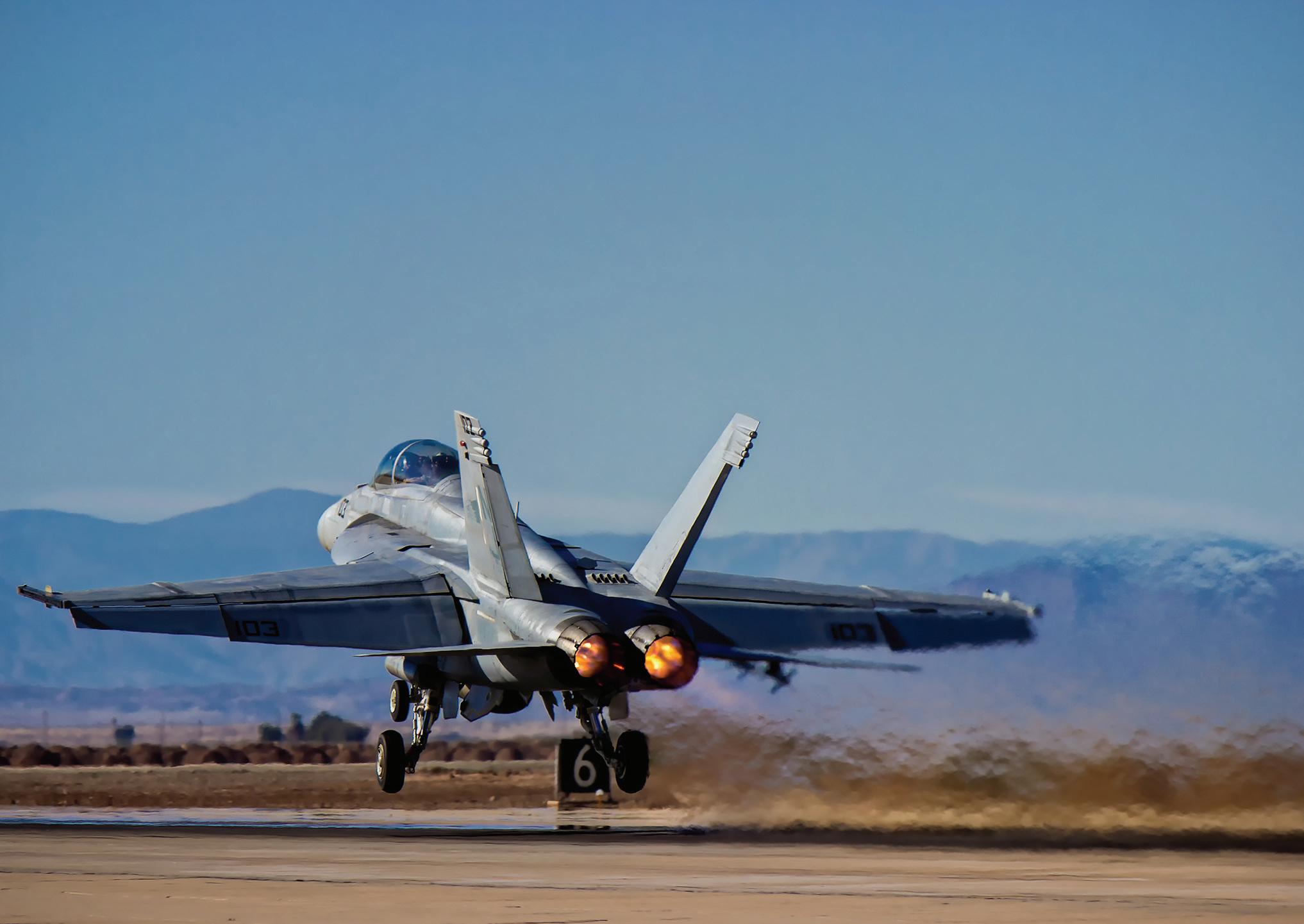

Source: Crisalion Mobility Press Release

CRISALION Mobility, a Spanish designer and developer of advanced electric mobility solutions that are efficient, safe and sustainable, and iJet Aviation, which specializes in integrated aircraft management, signed a cooperation agreement to develop the air mobility sector in the province of Malaga.
Under the agreement, CRISALION Mobility completed the pre-sale of 10Integrity aircraft to iJet, reflecting a clear commitment to operational innovation and paving the way for more accessible, efficient transport in the region of Andalusia.


As part of this partnership, CRISALION Mobility and iJet will designate routes connecting key hotspots in Malaga and its surroundings, offering unprecedented access to some of the region’s most important landmarks.
These routes include:
• Malaga-Costa del Sol International Airport: A key hub for domestic and global connectivity.
• Links to hotel complexes in the region: Direct links offering greater convenience for hotel guests.
• Puerto Banús, Marbella.
• Inland destinations: like Ronda and nearby areas like Gibraltar.
• Links to North Africa.
The official agreement signing ceremony took place last night at an event entitled ‘The Next Generation of Mobility Solutions’ at the Malaga Aeronautical Museum and was chaired by the CEOs of the two companies
– CRISALION Mobility’s Carlos Poveda and iJet Aviation’s Javier Barriga – accompanied
by Manuel Heredia, general manager at CRISALION Mobility.
The event was also attended by the Territorial Delegate of the Regional Government of Andalusia, Carlos García Giménez, the president of the Provincial Council of Malaga, José Francisco Salado, and the mayors of various municipalities in the province, as well as prominent business leaders and professionals from the aviation and technology sector.
The city of Malaga has become a global success story thanks to its ability to attract international talent and investment. The city’s entrepreneurial spirit is a perfect match for CRISALION Mobility’s goals, and this agreement is a clear example of how innovation and entrepreneurship in technology will continue to improve this ecosystem, shaping the city and supporting its progress.
Carlos Poveda, CEO of CRISALION Mobility, said: “This pre-sale of our Integrity aircraft and the designation of key routes in Malaga clearly evidence how Spanish companies are innovating and adapting their outlooks to the advanced air mobility solutions their customers will be demanding within a few years. In 2030, mobility will look completely different from the way it is today. We are proud to lead this revolution, upholding our commitment to innovation and sustainable development, both of which are fully aligned with the way we work and our outlook for the future.”
Javier Barriga, CEO of iJet Aviation, said: “This agreement with CRISALION Mobility is a major milestone for iJet and for the future of air mobility in Malaga. We are excited to work together to explore new opportunities and offer advanced air transport services to our customers.”

Source: eVTOL Insights
Author: Jason Pritchard
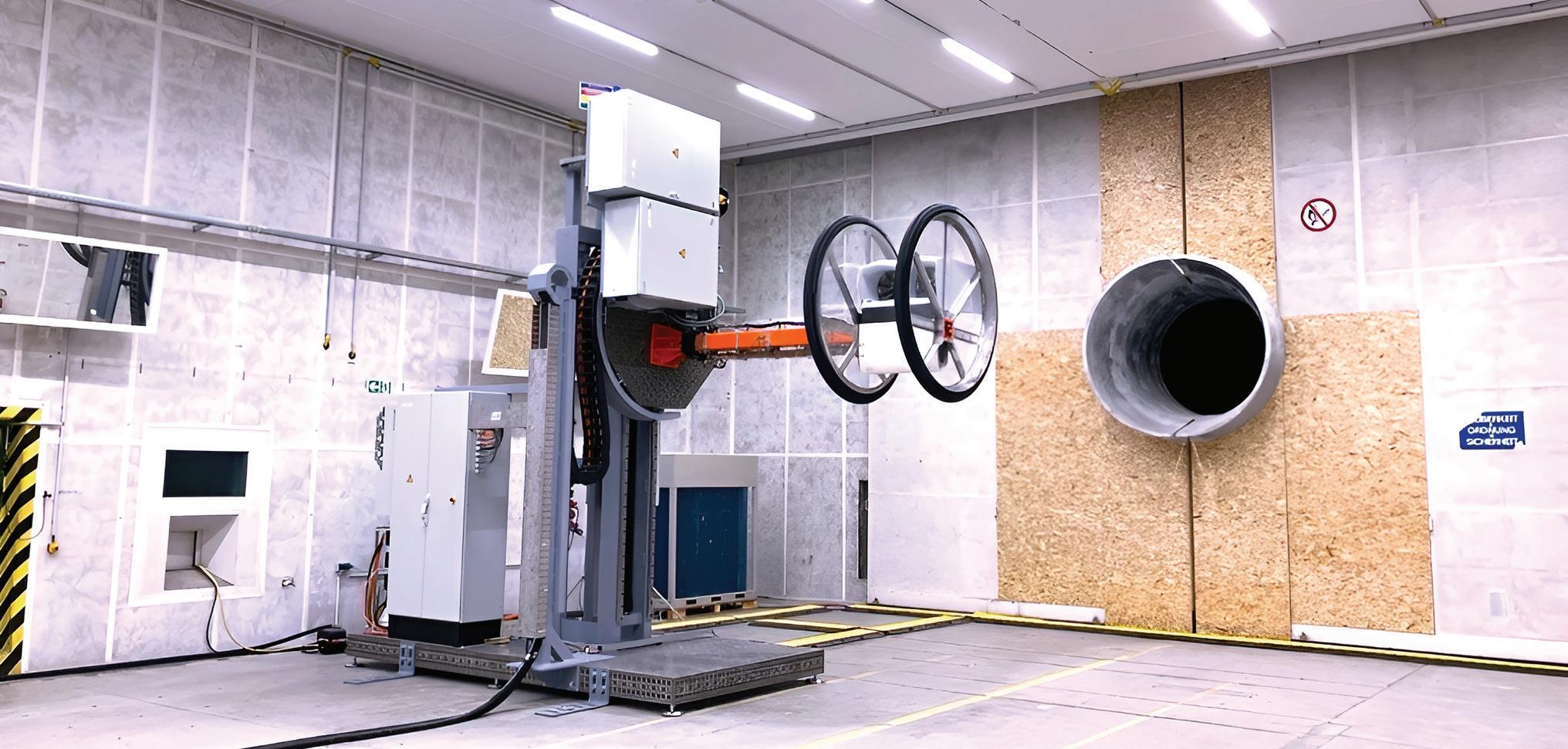

Lilium N.V. (Nasdaq: LILM), a leading electric aircraft manufacturer and pioneer in Regional Air Mobility (RAM), has successfully completed the first series of tests of its electric jet propulsion unit. For the first time, the electric engines were taken up to maximum thrust on the propulsion unit test bench, representing a landmark achievement on the journey to zero operating emissions flight and an important step towards verifying safety of flight of the Lilium Jet. The tests performed have demonstrated the expected level of performance and reliability, bolstering Lilium’s confidence in the maturity of its electric jet propulsion system.
Testing of the propulsion unit, comprising two engines within a propulsion mounting system, was carried out at Lilium’s dedicated propulsion unit test bed, located at Lilium’s headquarters near Munich. The test bed has been designed for aerodynamic and electrical performance evaluation of Lilium’s jet technology.
The successful first test of the propulsion unit follows comprehensive testing of the engine, developed and built in collaboration
with Lilium’s team of suppliers, including Denso and Honeywell for the e-motor, Aeronamic for the compressor fan, and SKF for the electric motor bearings.
Stephen Vellacott, Lilium’s Chief Technology Officer , said: “Completion of the first engine test is a significant achievement for Lilium, demonstrating once again Lilium’s credentials as a world leader in the development of electric jet propulsion technology. Over the past years, we have invested heavily in the technology and secured extensive IP rights. We now move a step closer to first manned flight and beyond that to the era of commercial electric flight.”
Daniel Wiegand, Lilium Co-Founder and Chief Engineer for Innovation & Future Programs, remarked: “For my fellow cofounders and myself, the first test run of the Lilium Jet propulsion unit marks another high point in our journey. It was our shared belief in the radical potential of electric jet technology that brought us together in 2015 and continues to drive Lilium on the way to transforming regional aviation. This latest milestone brings us closer to first manned
flight and our goal of commercial entry into service.”
Lilium continues to gear up for initial series production of the Lilium Jet propulsion unit at its propulsion assembly line near Munich. Aerostructures supplier Aernnova recently completed the first build of the Lilium Jet propulsion mounting system, the structure that houses the propulsion and vectoring systems and forms the rear part of the wings and front aerofoils. Earlier this month, the Spanish industrial engineering and technology group Sener delivered the first set of servo-actuators for the Lilium Jet. The servo-actuators enable the propulsion units to be rotated, allowing the aircraft to transition from vertical flight mode (during take-off and landing) to horizontal flight and vice versa. Propulsion units coming off Lilium’s production line in the coming months will be used for ground testing and integration in the first flight aircraft.






VerdeGo Aero, a company that makes airplane engines, got a contract from NASA to make a new kind of engine that uses both electricity and regular fuel. This engine can help airplanes be more efficient and eco-friendly. It's like making a car that can run on both gas and batteries, but for planes.


UrbanV and ICAD are teaming up to bring advanced air mobility (AAM) to Saudi Arabia. This means they want to use new flying vehicles to help people travel around cities more easily. It's like building cool new flying cars to help everyone get where they need to go faster.
Different aerospace companies are working together to make sure old and new technologies can be used safely together. This is like making sure new toys and old toys can work well together in the same playroom without causing any problems.
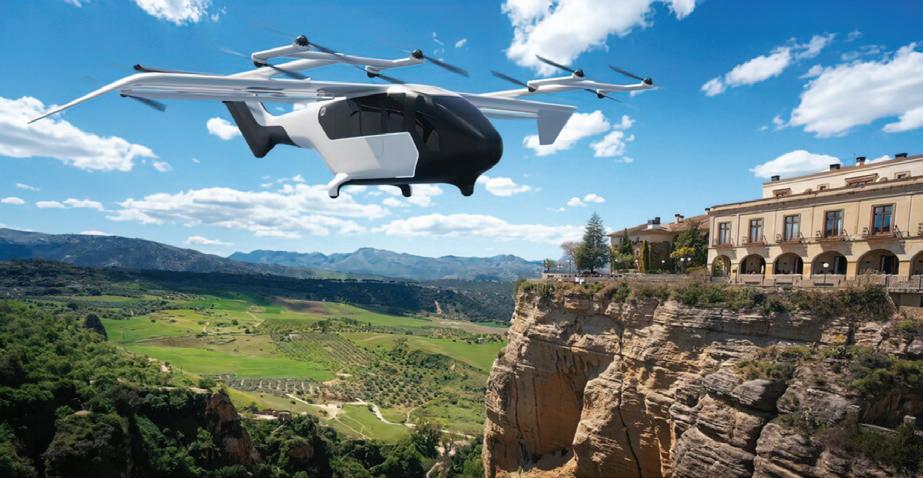

Crisalion Mobility agreed to sell 10 new electric flying vehicles called eVTOLs to iJET. These vehicles can take off and land like helicopters but are powered by electricity. It's like getting a bunch of new flying cars that are better for the environment.
A company named Lilium, successfully tested its new electric jet propulsion system. This system helps jets fly using electricity instead of regular fuel, making them more eco-friendly. It's like inventing a new type of super-fast, battery-powered toy plane that can really fly and carry people.



Find the words in the puzzle:
Words can go in any direction. Words can share letters as they cross over each other.
Check your answers on page 86



Source: Avfoil News
Author: A.I. Editorial
AIR unveils an eVTOL for logistics, FlightHorizon aids Osage Nation’s droneport, Canadians react to flying taxis, Unifly transports autonomously, and Phenix Solutions tests its autopilot.
1st - AIR unveils unmanned AIR ONE Cargo eVTOL
AIR expands into logistics with its AIR ONE Cargo eVTOL, capable of vertical takeoff and carrying 550 pounds. This unmanned aircraft, part of a $1 million revenue boost, supports scaled production and aligns with the U.S. Air Force's Agility Prime program .
2nd - FlightHorizon to manage Osage Nation's droneport
FlightHorizon will provide airspace management for Skyway36, a droneport in Osage Nation. This collaboration aims to enhance drone traffic safety and operational efficiency, promoting drone technology advancement in the region.
3rd - Canadians optimistic yet cautious about drones
A Canadian report reveals mixed feelings about flying taxis and drones. While there is optimism about technological advancements, concerns remain about safety and regulations, reflecting the public’s cautious approach to new aviation technologies .
4th - Unifly enables autonomous transport in Antwerp
Unifly's UTM system supports the world's first autonomous petrochemical sample transport at Antwerp's port. This breakthrough highlights the potential for integrating drones into industrial logistics, enhancing efficiency and innovation .
5th - Phenix Solutions tests autopilot tuning
Phenix Solutions completes Phase I autopilot tuning for its unmanned aircraft, marking a significant milestone in its development. This progress enhances flight safety and precision, positioning Phenix for future advancements in autonomous aviation .
To stay updated with the latest news in the UAS/UAV industry, visit: avfoil.com/news for daily updates and in-depth coverage of groundbreaking advancements.

Source: AIR Press Release

AIR, an original equipment manufacturer (OEM) of midsize eVTOLs, announced its expansion into the cargo and logistics market with its new, unmanned AIR ONE Cargo eVTOL.
In the last year, while maintaining its role at the forefront of the high-volume general aviation market, the company has secured multiple deals to supply the unmanned version of its flagship eVTOL aircraft, AIR ONE, for cargo purposes.
Concluding 2023 with over $1 million in revenue, the additional purchase orders have significantly boosted the company’s revenue projections for 2024 and 2025. Having already successfully delivered the first cargo aircraft, AIR is set to continue fulfilling the purchase orders for the remaining AIR ONE Cargo units throughout 2024 and the first half of 2025.
Driven by high market demand and backed by purchase orders, AIR developed the unmanned eVTOLs for cargo use-cases, in addition to its manned, “personal use” variant. The exponential growth in revenue since AIR’s expansion into cargo and logistics demonstrates AIR’s great promise as it continues pursuing mass eVTOL production.
AIR ONE Cargo firmly bolsters the maturation of AIR’s products and design concepts, contributing valuable flight hours toward safety verification. Additionally, the cargo aircraft aids in achieving scaled production volume, leveraging AIR’s automotivebased production line, methodologies, and

automated manufacturing systems.
“Venturing into this new market with AIR ONE Cargo is a testament to our unwavering commitment to the integration of eVTOLs into all spheres of daily life, for a variety of use cases,” said Rani Plaut, CEO and co-founder of AIR.
“We expanded our offerings in response to strong market demand, and the feedback we’ve already received affirms that AIR ONE’s robust capabilities and simple, cost-effective design make it an extremely agile platform, uniquely able to scale across different uses.”
Capable of taking off and landing vertically while carrying a 550-pound (250kg) payload, the all-electric AIR ONE Cargo offers a practical long range on a single charge at speeds comparable to the manned passenger variant of AIR ONE.
This offering marks the latest milestone for AIR, which announced its participation in the U.S. Air Force’s prestigious AFWERX Agility Prime program in December to drive flight testing and additional R&D efforts in the United States.
AIR is continuing to amass significant flight test hours with its full-scale prototypes after successfully proving all phases of flight. With 1,170 AIR ONE vehicles for personal use already reserved via preorder and a waiting list, AIR plans to deliver the first batch of aircraft to consumers following aircraft certification.


Source: Vigilant Aerospace Press Release

Vigilant Aerospaces’ FlightHorizon airspace management and uncrewed traffic management (UTM) system has been selected as the airspace management system for the Skyway36 droneport in Tulsa, Oklahoma. Skyway36 is a leading droneport in the United States and serves as an “airport for drones” and for larger Advanced Air Mobility (AAM) aircraft, like air taxis.
Vigilant Aerospace is a provider of multisensor detect-and-avoid and airspace management software for uncrewed aircraft systems (UAS) and advanced air mobility (AAM). With FlightHorizon, Skyway36 will be able to track and coordinate drones, detect intruding aircraft and provide a safe environment for beyond visual line of sight (BVLOS) flight of drones, which is essential for growing the UAS industry.
Skyway36 is the Osage Nation’s aerospace

innovation zone, providing dedicated facilities for UAS flights. It is designed to support advanced air mobility and drone missions including survey drones, first responder drones, autonomous delivery aircraft and other missions. The facility includes a state-of-the-art UAS indoor test facility operated by Windshape, hangar and office space under development, a 3,000-foot runway suitable for larger, fixedwing drones, and a certified helipad for both conventional helicopters and for new electric vertical takeoff and landing vehicles (eVTOLs).
The site is managed by DronePort Network, under contract to Osage LLC and is the first commercial node on the Skyway Range Flight Corridor, a 114-nautical mile drone corridor and one of the most ambitious advanced air mobility projects in the nation. Skyway Range consists of four major
nodes for autonomous flight testing along multiple routes and is supported in part by a grant from the US Economic Development Administration.
Quote from Craig Mahaney, CEO of DronePort Network: “As autonomous flight gathers momentum, we’re seeing a growing number of flights from droneports like Skyway36. To scale safely and successfully, we must ensure an environment designed to enable long-distance drone flights, air traffic monitoring and advanced safety systems. Vigilant Aerospace’s FlightHorizon allows Skyway36 to provide these services and to attract more operators by providing a world-class facility and technology for a wide variety of uncrewed flight operations and testing.”
Quote from Russell Goff, CEO of Osage, LLC: “Skyway36 is working to provide and build premium infrastructure and this partnership with Vigilant Aerospace and its FlightHorizon system helps to keep us at the forefront of the industry. As an officially designated Tech Hub by the U.S.
Economic Development Administration, the Tulsa region and our droneport can play an important role in the national development of autonomous systems.”
Quote from Kraettli L. Epperson, CEO of Vigilant Aerospace: “Skyway36 provides a significant capability not just regionally but nationally for furthering autonomous flight Installing FlightHorizon at one of the nation’s first commercial droneports is a milestone for the industry and helps to set the standard for shared infrastructure at droneports everywhere. Being the first node on the Skyway Range Flight Corridor also provides significant opportunities to make Skyway36 and this region a national proving ground.”
FlightHorizon is based on two NASA patents and fuses data from a range of sources including aircraft transponders, radar, drone autopilots, and live FAA data to create a single picture of airspace around a drone. The software predicts trajectories and provides standards-compliant avoidance commands to the remote pilot.

Canadian report: “Public feel both optimism and concern towards flying taxis and drones”
Source: eVTOL Insights
Author: Chris Stonor




Transport Canada recently commissioned one of North America’s “fastest growing research companies”, Léger, to carry out a poll asking Canadians their view on flying taxis and drones travelling between remote communities and over city and suburban areas.
The response was reassuring. The study found residents hold a broadly positive attitude towards Advanced Air Mobility (AAM).
Respondents particularly favoured AAMs potential for good, including search and rescue, firefighting, medical use, and assisting with the aftermath of environmental disasters. Comfort with these uses were around 80 percent.
Surveying and inspections of power lines, for example, as well as cargo shipment also had overwhelming support. It was only the Flying Taxi aspect, the transporting of people, rather than things, notched below 50 percent in favour.
One participant told the pollsters, “If we are talking about emergencies, then it’s a nobrainer. We are going to save lives and put out fires. But when it comes to transportation, it’s a NO!”


Further concerns over safety, affordability, environmental impact and privacy tempered enthusiasm for the air taxis.
The report stated, “The outlook on AAM in Canada is a complex blend of optimism and concern. Issues such as the safety and privacy risks associated with drone use, the environmental footprint of AAM operations and the readiness for autonomous functions are significant worries.”
Over half of respondents had reservations around safety and potential crashes. More than one-third pointed to security threats and privacy fears. And between a quarter and a third highlighted prices, noise pollution and the impact on the environment.


The “cautious optimism” of respondents toward drones and eVTOLs underscores their perceived benefits, the authors concluded. “Yet it also sends a clear message about the necessity to tackle safety, environmental and social issues.”
At present, drones are deployed for tasks ranging from aerial photography to search-and-rescue missions and wildfire detection in Canada.
Meanwhile, air taxis gained a colder perception from those polled. While eVTOLs hold the promise of transporting people and goods across congested cities and urban areas, Canada is lagging behind some of its peers on regulation and general policy.
Although last month, Boeing pledged USD240 million toward a Montreal-area aerospace cluster that will include Advanced Air Mobility research pertinent to its flying taxi subsidiary, the autonomous Wisk Aero.
Brendan Nelson, Boeing’s Global President, explained in a recent interview, “The expertise here in autonomy is as good as, if not better than, pretty much anywhere else in the world.” Adding, “Certification is definitely on the horizon.”
Even so, what comes over from the Léger report, yet again (!) is the lack of public education. If there was a case of the eVTOL companies cutting off their nose to spite their face, here is a classic example.
The poll showed that “more than three-quarters of respondents to the Léger survey had never heard of advanced air mobility, whether flying taxis or drones.” Yes, over 75 percent! Put that on a rotor blade and chew it. How many

times does one have to bang the drum to get this critical point over to the leading flying taxi establishments.
Education, education, education.
Awareness was higher among Canadians aged 18–34; those with a university diploma; men and Indigenous people and people of colour. The 99page paper was based on two studies carried out between November and January, with a survey sample size of 2,717 participants alongside four focus groups.
For more information https://leger360.com/en https://tc.canada.ca/en (News Source: montreal.citynews.ca)


Unifly’s
“enables
Source: eVTOL Insights
Author: Chris Stonor

Unifly, a leader in UAS Traffic Management (UTM) solutions, announced last week, its important role in enabling the first-ever autonomous drone transport of petrochemical analysis samples at the port of Antwerp, reports a press release.
This groundbreaking initiative from ADLC (Drone Delivery Services), SGS (Engineering) and BASF (TotalEnergies), facilitated by Unifly’s advanced UTM system and using Beyond Visual Line of Sight (BVLOS) technologies, “marks a significant milestone in the integration of autonomous drone technology into industrial operations,” says the release.
Named ‘The Samplify Project’, ADLC is the first drone delivery service in Europe, approved for transport of petrochemical samples, and the first worldwide within a port’s non-segregated controlled airspace.
Traditionally, sample transport is conducted by road. Using drone logistics reduces transport time by up to six times, decreases CO2 emissions by up to 80 percent, and significantly enhances operational efficiency for both BASF Antwerp and SGS.
Andres van Swalm, CEO of Unifly, commented, “The successful implementation of BVLOS operations for petrochemical sample transport demonstrates the immense potential of autonomous drones in industrial applications.

This project sets a new standard for safety and efficiency in drone logistics.”
Marc Kegelaers, co-Founder of ADLC, added, “Leveraging the advanced UTM system of Unifly has been instrumental in making the Sampifly Project a reality. This partnership has enabled us to meet stringent safety requirements and pioneer the use of autonomous drones for petrochemical sample transport, setting a new benchmark for efficiency and innovation in the logistics industry.”
Unifly’s NextGen UTM system ensures safe drone operations at the port of Antwerp with real-time monitoring, automated flight planning, and enhanced situational awareness, “enabling seamless BVLOS operations.”
Serving as a consultant for the Samplify Project, Unifly played a vital role in obtaining flight authorisations. Since the Antwerp-Bruges Port Authority already utilises the Unifly’s UTM system, it was instrumental in managing the necessary approvals.
Operational since mid-March 2021, the Port of Antwerp-Bruges DronePortal has processed over 5,700 flight authorisations, playing a pivotal role in the evolving U-space landscape. The implementation of Unifly’s UTM system at the Port, in cooperation with SkeyDrone, has created an environment that fully realises the potential of the drone industry.
Source: Phenix Solutions Press Release

Phenix Solutions has completed the Phase I autopilot tuning for our Ultra 2XL Heavy Lift UAS. With help from the Embention autopilot technical team, Phenix has successfully completed programing the engine, rotor system, electronic, and avionics to allow fully autonomous function of these systems. Currently, IronBird testing is underway at the Phenix McMinnville, Oregon, facility flight testing to follow at the Pendleton, Oregon, UAS flight range later this month.
The Phase I tuning revealed how precise and smoothly the actuators and control

systems operated when controlled by the Embention autopilot. Rotor system actuation is extremely responsive and smoothly moves through the entire range envelope. As the RR300 engine does not have a FADEC, Phenix developed an automated system that commands the control of starting and maintaining engine function throughout the Ultra 2XL missions along with maintaining rotor, avionics and electrical functions. Though this requires many hours of programming and testing, the Embention autopilot has shown to be very capable of meeting the demands of the Ultra 2XL.
















AIR has introduced a new drone called AIR ONE that can carry cargo without a pilot. This drone can help move packages quickly and efficiently, like a flying delivery truck. It’s designed for the logistics market, meaning it can help businesses deliver things faster and more easily.


FlightHorizon will manage the airspace for Skyway36 Droneport, which belongs to the Osage Nation. This means they will help control where and when drones can fly, making sure everything is safe and organized, like traffic lights and signs for drones in the sky.
A report in Canada shows that people are excited but also a bit worried about flying taxis and drones. They think these new technologies could be really cool and helpful but are also concerned about safety and how they will fit into everyday life.


Unifly created a system that lets drones transport petrochemical samples by themselves at the Port of Antwerp. This is the first time it’s been done without human help, making it safer and faster, like having a robot deliver important things all on its own.
Phenix Solutions Inc. has finished the first part of testing their new autopilot system. This system helps drones fly by themselves more accurately. It's like teaching a toy plane to fly perfectly without anyone controlling it, making future flights smoother and safer.








Source: Avfoil News
Author: AI Editorial
MUFG invests in sustainable fuel tech, Luxaviation Group offers SAF in Paris, Phillips 66 completes renewable site conversion, Brazil's GOL signs with SkyNRG, and India's NTPC eyes SAF production.
MUFG Bank invests in LanzaJet's $100 million funding round, supporting the development of ethanol-to-SAF technology. This investment helps LanzaJet enhance its production capabilities and aligns with efforts to decarbonize aviation by producing sustainable fuels for environmental and economic benefits.
Luxaviation Group will offer Sustainable Aviation Fuel (SAF) at Paris-Le Bourget, a move to promote greener aviation practices. By providing SAF, the company aims to reduce carbon emissions and support the industry’s shift towards sustainable travel solutions .
Phillips 66 has finished converting its Rodeo site to produce renewable fuels, boosting its sustainable energy capabilities. The site will now produce low-carbon renewable diesel and SAF, marking a significant step in Phillips 66’s commitment to environmental sustainability.
GOL Linhas Aéreas partners with SkyNRG’s Book and Claim service, enhancing its sustainability efforts by investing in SAF. This initiative supports GOL’s strategy to reduce carbon emissions and promote cleaner aviation practices in Brazil
NTPC, India's largest power utility, plans to produce SAF as part of its diversification strategy. This initiative aligns with NTPC’s commitment to sustainable energy and supports the aviation industry's transition to eco-friendly fuel alternatives
To stay up to date with the latest news and trends in the Sustainable Aviation industry, visit: avfoil.com/news

Source: SAF Investor
Author: Fayaz Hussain

Sustainable fuel technology developer LanzaJet announced that it has received investment from MUFG bank as part of its ongoing $100m funding round joining the likes of Southwest Airlines, Microsoft and Groupe ADP.
“MUFG is deeply committed to redefining the future of finance by prioritizing innovative and sustainable industry solutions. Our strategic support for LanzaJet is a prime example of this commitment, signifying our belief in the critical role of sustainable fuels for the economic and environmental well-being of the businesses we serve,” said Koichiro Oshima, managing executive officer, head of financial solutions group, MUFG Bank.
LanzJet said the investment from MUFG will help the company increase its capabilities and technological capacity to deploy their ethanol-to-sustainable aviation fuel (SAF) technology.
The SAF company recently commercialised its next generation ethanol-to-SAF technology and launched the world’s first commercial-

scale ethanol-to-SAF Freedom Pines Fuels biorefinery.
Located in the United States, the plant will produce SAF and renewable diesel from lowcarbon and sustainable ethanol and achieve International Sustainability and Carbon Certification (ISCC).
“We continue to build a leading team of investors along the SAF value chain who believe in LanzaJet’s ability to decarbonise aviation, which will both address climate change and enable the global economy,” said Jimmy Samartzis, CEO, LanzaJet.
“The investment from MUFG further enables LanzaJet’s efforts to scale SAF production, with one of the world’s leading financial groups enabling the development of infrastructure globally.”
In addition to MUFG, LanzaJet’s portfolio of investors and funders includes All Nippon Airways (ANA), Breakthrough Energy, British Airways, Groupe ADP, LanzaTech, Microsoft’s Climate Innovation Fund, Mitsui & Co., Shell, Southwest Airlines, and Suncor Energy.
Source: Corporate Jet Investor
Author: Fayaz Hussain

The International Center for Renewable Energy (CIBiogás) and the BrazilGermany Cooperation for Sustainable Development inaugurated pilot plant to produce synthetic oil from biogas to be utilised in production of sustainable aviation fuel (SAF).
The project is being developed with an investment of €1.8m ($2bn) from from the Federal Ministry for Economic Cooperation and Development of Germany (BMZ) through the H2Brasil Project. The pilot was launched on June 17th.


Located at the premises of Itaipu Binacional near the Parana river, world leader in electricity generation from clean and renewable energy sources which provides 15% of all electricity consumed in Brazil and 82% of Paraguay, will produce 6kg of syncrude per day which will be then be processed into SAF.
Moreover, the project will use 50 Nm³ per day of biogas as the key carbon feedstock and 53 Nm³ per day of green hydrogen from Itaipu Binacional’s biodigestion unit and Itaipu Technology Park respectively.
“We work together so that this first biosyncrude plant in the country, located in Foz do Iguaçu, can economically enable a route for the production of green fuels from the valorisation of biogas, with an emphasis on the development of the power-to-x market in the state of Paraná,” said Markus Franke, director, H2Brasil project.
As part of the partnership between the Brazil-
Germany Cooperation and CIBiogás, the two sides have also developed a dynamic map to identify areas with greater potential for SAF production in Paraná.
“This map highlights the most promising regions for the production of aviation biokerosene using biogas. The analysis reveals that the state has a potential production of 15,000 cubic meters per year of SAF from the biogas generated by the biogas plants in operation mapped in 2022”, explained the CEO of CIBiogás, Rafael Hernando de Aguiar Gonzalez.
“The bio-syncrude plant combines the biogas produced at Itaipu’s demonstration unit, which we have been operating since 2017, with PTI’s green hydrogen, which we have been operating for ten years, transforming it into a new fully renewable asset, aiming at the decarbonization of the transportation sector. With this, we reaffirm its commitment to sustainability and innovation, contributing to the Brazilian energy transition,” said Enio Verri, general director, Itaipu Binacional.

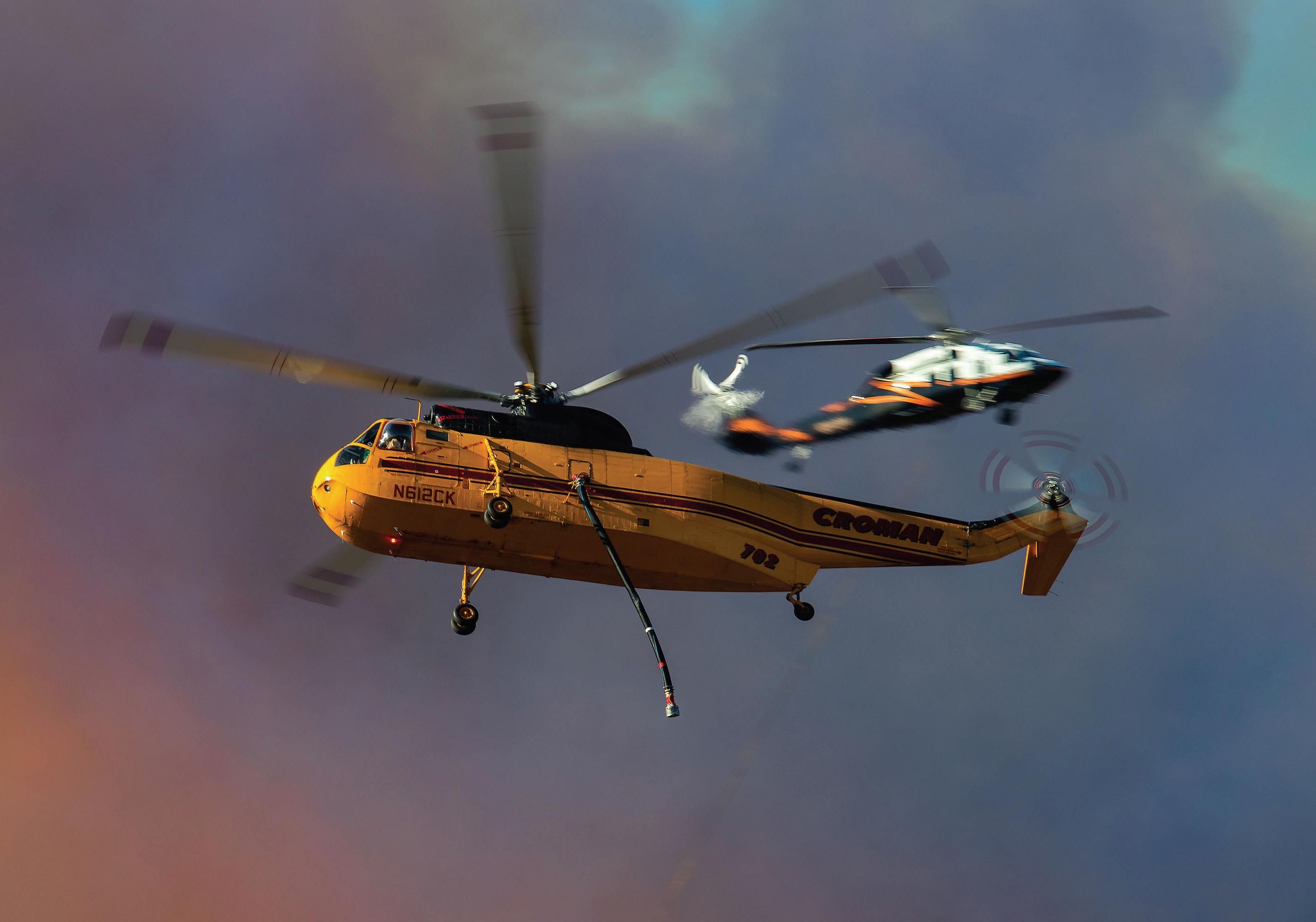

Source: SAF Investor
Author: Fayaz Hussain

Phillips 66 announced that it has completed full conversion of the Rodeo Renewable Energy Complex, increasing the output of renewable fuels to 50,000 barrels per day.
“Phillips 66 has reached another important milestone, which is a testament to our employees’ dedication to achieving our company’s strategic priorities,” said Rich Harbison, executive vice president refining, Phillips 66. “The facility running at full capacity supports the growing demand for renewable fuels, lowers our carbon footprint and creates long-term value for our shareholders.”
The Rodeo facility’s 50,000bpd output is in line with the company’s goal of achieving





full capacity by the second quarter of 2024.
Announced in 2020, Rodeo Renewed is designed to produce renewable diesel and sustainable aviation fuel (SAF), among other products. In addition to supplying California markets, the complex is providing renewable diesel in other areas along the West Coast.
The Rodeo complex includes new pretreatment units that process lower carbon intensity feedstocks, such as used cooking oil, fats, greases and vegetable oil.
It began producing approximately 30,000bps of renewable fuel at the end of the first quarter of 2024.
Source: SAF Investor
Author: Fayaz Hussain

Sustainable aviation fuel (SAF) company SkyNRG announced that it has onboarded Brazilian airline GOL as the first partner for its book-and-claim programme called the ‘Project Runway’.
“GOL is the first Latin American airline to leverage the book and claim system, and they can now share the SAF price premium with corporates aiming to reduce their related Scope 3 aviation emissions,” said the company in the release.
Brazil’s largest fuel supplier Vibra Energia supplied traditional jet fuel to Gol, whose

emissions of 180 metric tons of CO2 were then offset by the use of 50 tons of used cooking oil-based SAF provided by SkyNRG to the Schiphol Airport in Amsterdam.
By participating in the SkyNRG’s programme, GOL is eyeing to reach its voluntary SAF goals before mandatory rules come into effect. Brazil is expected to introduce SAF blending targets from 2027 onwards.
The partnership between Gol and Vibra was part of a pilot project to explore uses of book-and-claim system in Brazil.







EDITOR'S CHOICE
Source: SAF Investor
Author: Fayaz Hussain

Indian state-run power generation company NTPC is planning to invest $50bn over the next decade to develop a portfolio of clean energy projects, according to local media reports.
“There are major plans for methanol, ethanol, green hydrogen for transportation and also sustainable aviation fuel (SAF), for which it is already in talks with some airlines,” the local media quoted people familiar with the matter.
Reports claim that the India’s largest power producer may look to set up annual capacity of 100,000 tonnes of SAF at Pudimadaka in the Northeastern state of Andhra Pradesh.
SAF has picked up pace in India with government looking into putting regulations in place to develop a local production base. India is currently mulling plans to set an indicative target of 1% SAF by 2027 while doubling it to 2% by 2028.
In the meanwhile, Indian energy conglomerates such a the Indian Oil Corporation Ltd and

Bharat Petroleum Corporation Ltd are pursuing SAF production through research and joint partnership with technology providers.
Indian biofuel technology GPS Renewables recently announced it has partnered with SAF One to develop SAF production plants in India. The partners aim to develop a SAF production capacity of 20-30m litres using lignocellulosic waste feedstock (dry plant matter) as feedstock in India.
Moreover, earlier in January 2024, Indian Union Minister Hardeep Singh Puri inaugurated Praj Industries’ SAF demonstration facility at its R&D Center in Pune. Praj announced that the company has developed a proprietary technology to process agricultural feedstocks for the production of SAF that can be blended with aviation turbine fuel.
NTPC is India’s largest power utility with a total installed capacity of 76,048 MW (including JVs). Established in 1975, NTPC is targeting to become a 130 GW firm by 2032.

MUFG, a big bank, is investing money in a company called LanzaJet. LanzaJet makes a special kind of fuel that’s better for the environment. This investment helps LanzaJet make more of this eco-friendly fuel, which can be used in airplanes to reduce pollution and make flying greener.


Luxaviation Group is going to offer a special ecofriendly fuel called SAF (Sustainable Aviation Fuel) at their Paris Le Bourget location. This fuel helps reduce pollution from airplanes. It’s like giving planes a cleaner, greener type of gas that’s better for the environment.
Phillips 66 has finished turning their Rodeo site into a place that makes renewable fuels. These fuels are better for the environment because they come from things like plants instead of oil. It’s like converting an old factory into a new one that only makes ecofriendly products.
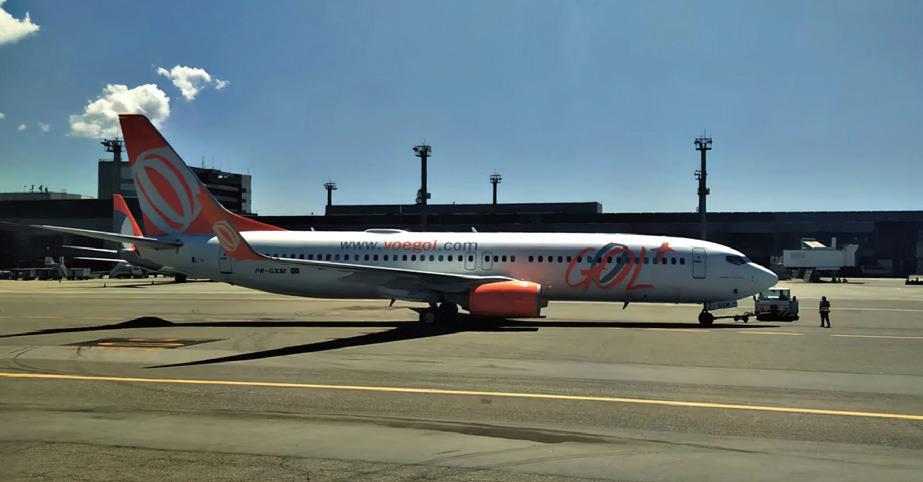

Brazil’s airline, GOL, is using a service from SkyNRG that helps them buy eco-friendly fuel called SAF. Even if they can’t use the fuel right away, they can still support its production. It’s like paying for green energy that will help the planet, even if you can’t use it right now.
India’s NTPC, a big energy company, wants to start making eco-friendly airplane fuel called SAF as part of their plan to do more than just produce electricity. They’re expanding into new areas to help the environment. It’s like a company that used to make just one thing deciding to make more products that are good for the Earth.





ACROSS
2. A plant that can be turned into biofuel.
3. Something that can last and protect the environment.
7. A word that describes energy or fuel that doesn’t pollute.
8. Aviation fuel made from plants or waste that’s better for the environment.
11. A type of energy that doesn’t run out, like wind or solar.
14. A clean fuel that could power future planes.
16. The science of flying planes.
DOWN
1. What powers electric planes instead of fuel.
4. A new idea or method, like creating sustainable aviation fuel.
5. Using energy in the best possible way without waste.
6. A plane that uses both fuel and electricity.
9. The act of flying, which can be made greener with sustainable aviation.
10. A type of power that’s used by sustainable aircraft.
12. The part of the plane that helps it lift into the air.
13. Another word for environmentally friendly.
15. How some planes move through the air with less power.
Use the clues to fill in the words above. Words can go across or down. Letters are shared when the words intersect.




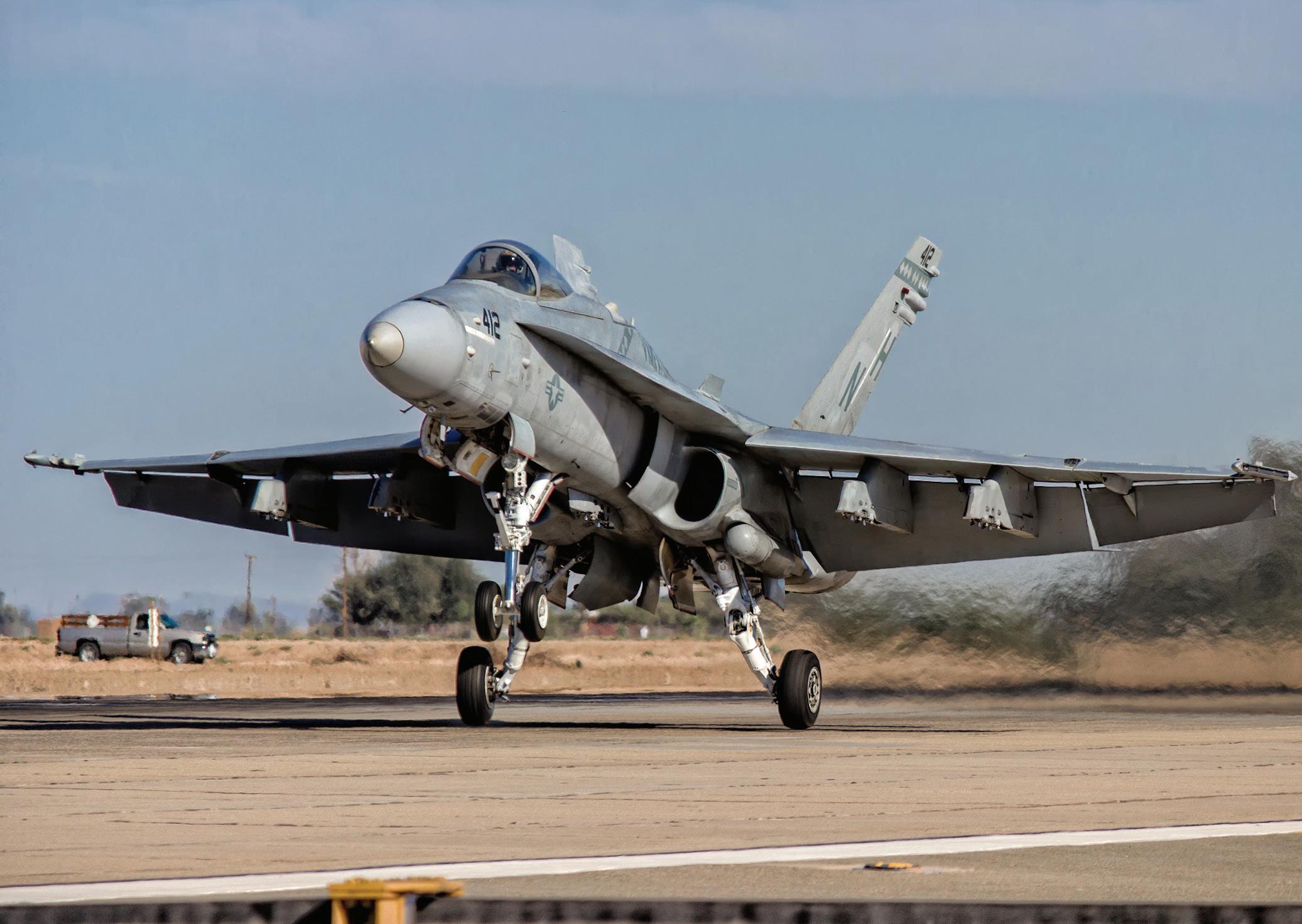




FLY TO THE MUSEUM - pg 41 -


LEARN MORE ABOUT AAM COMMONLY USED WORDS - pg 56 -

TEST THEIR NEW AUTOPILOT - pg 72 -




